I wrote some months ago about a new vine I planted along our backyard fence: Passiflora suberosa, the Corkystem Passionvine. It’s a nice little vine, with nice little flowers. But it’s a small vine, and it hasn’t taken off the way I’d hoped it would. So a few weeks ago when I went to get more mulch, I picked up its big brother, the maypop vine, Passiflora incarnata. That’s the one with the three-lobed leaves and the much showier flower:
I got a 3-gallon plant, put it in the ground about two weeks ago, and it’s already attracted its first set of Agraulis vanillae butterflies, Gulf Fritillaries. Yes, I know we live on the Atlantic coast of Florida, not the Gulf coast, but the butterflies don’t really care about the names we assign them, and they don’t read the maps either. (I joke; this is a widespread butterfly in Florida, indeed throughout the Southeast—the Gulf states and non-Gulf states alike. I also don’t joke—the butterflies don’t read!) The “fritillary” part of the name appears to be a reference to this butterfly family’s association with the colorful flowers in the genus Fritillaria, but I haven’t been able to confirm that.
While we’re discussing names, let’s take a look at the scientific name, Agraulis vanillae. According to my Composition of Scientific Words, the Greek word agraulos means “dwelling in the field, living outdoors,” which is a pretty apt description of just about any butterfly. From the same source, vanilla is from the Spanish vainilla, dim. of vaina, sheath, scabbard. I don’t have a source describing the naming of this particular species, but if we just go by the translations, I suppose outdoor-living sheath/scabbard (presumably for the long-winged aspect?) isn’t too bad a description of this fine animal.
During summer and fall, apparently, “countless numbers” of this species migrate into Florida from throughout the eastern United States (Minno & Minno).
So much for names; how about a few shots of today’s visitors?
The upperwing pattern of this heliconian (it’s a longwing butterfly) is quite striking, with the deep orange color and the strong black outlines. The little bit of white in the “shoulder spots” (“bright black-ringed white spots in FW cell” according to my Glassberg) is echoed by the white spots around the head. These white spots are carried over on the underwing as well. If you can see the underwing (see pix below) you might also be able to spot the bold white stripes on the orange thorax. You might, as long as you’re not distracted by the brilliant silvery-white HW pattern!
All told, this is quite a beautiful animal and it makes more than just aesthetic sense that it chooses to lay its eggs on such a beautiful vine. Whether P. suberosa or P. incarnata, the chemicals in the passionvine are taken up by the caterpillar when it eats the leaves, and these chemicals confer a noxious taste to both the larva and the adult forms. Here is a shot of the caterpillar from the archives; it’s on P. suberosa at the old house:
Here is the title shot; a Gulf Fritillary female caught in the act of attempting to pass on its genes to the next generation, and giving us a great shot of its underwing and the bold white patterns and stripes on the thorax as well:
And here is what the life capsule (more commonly known as an egg from the good Old English word æg, egg) looks like:
This morning there were at least 3 individuals flitting around; two appeared to be either males fighting for territory or a male/female pair courting. I didn’t get a good enough look to tell. But from the evidence above, at least one of the three was actively laying, and I found several eggs. They could all be from the same female, but perhaps not.
References
Brown, R.W. (1956). Composition of Scientific Words. Washington, DC: Smithsonian.
Glassberg, J. (1999). Butterflies Through Binoculars: The East. NY: Oxford UP.
Minno, M.C. & Minno, M. (1999). Florida Butterfly Gardening. Gainesville: UP of Florida.
Minno, M.C., Butler, J.F., & Hall, D.W. (2005). Florida Butterfly Caterpillars and Their Host Plants. Gainesville: UP of Florida.

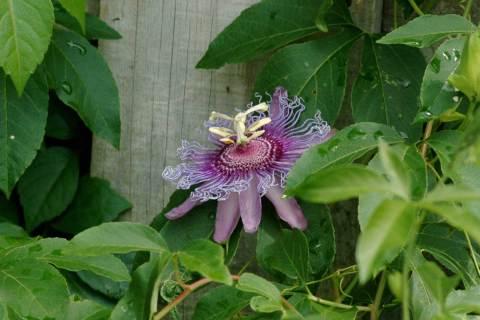
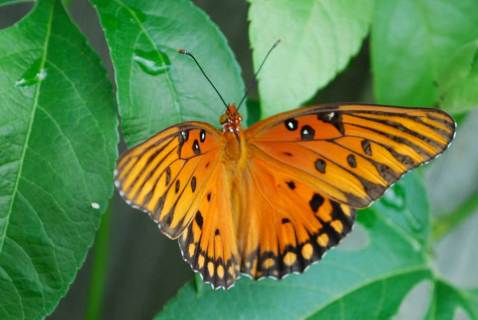
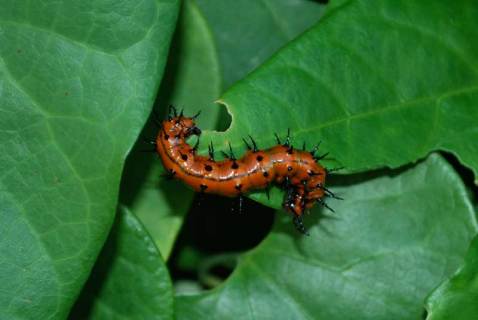
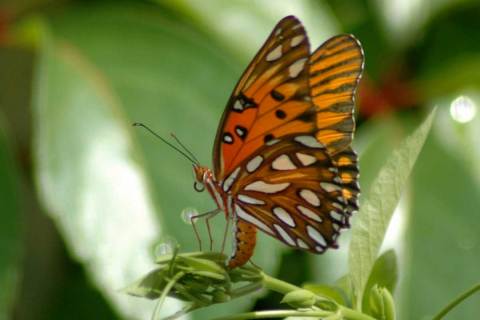
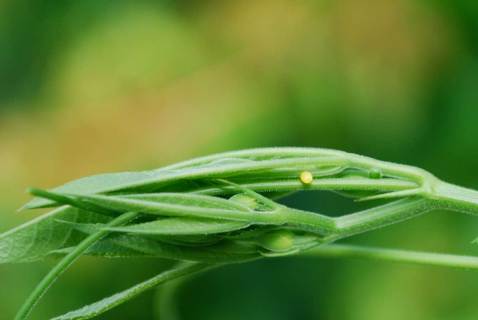
Thanks to your article, I was able to identify this butterfly. It was great to read about the background of it.